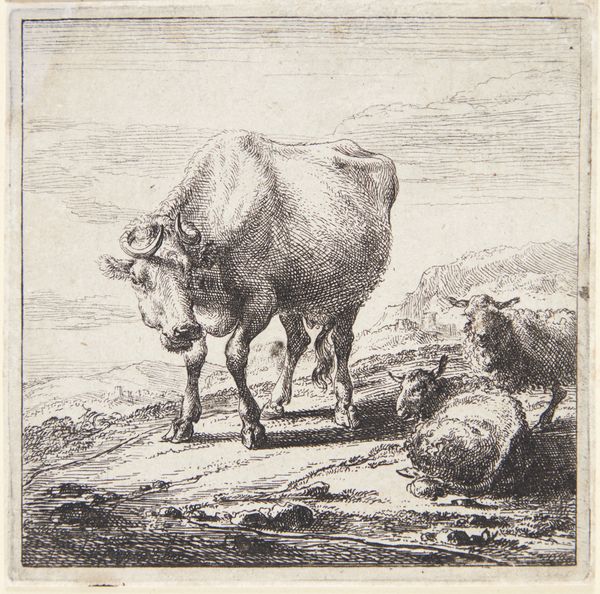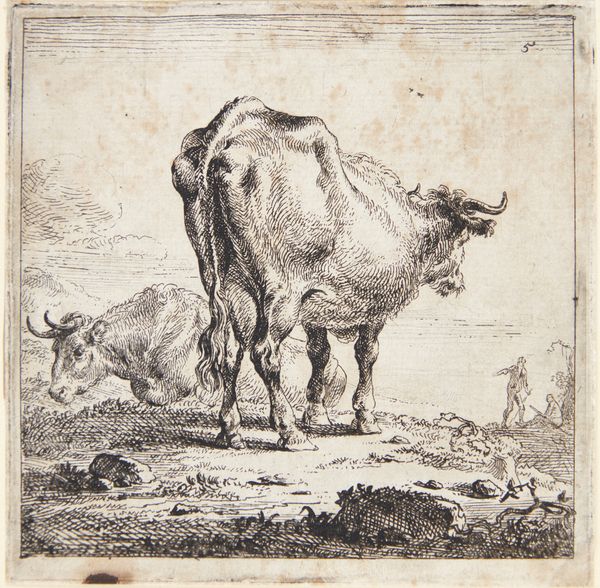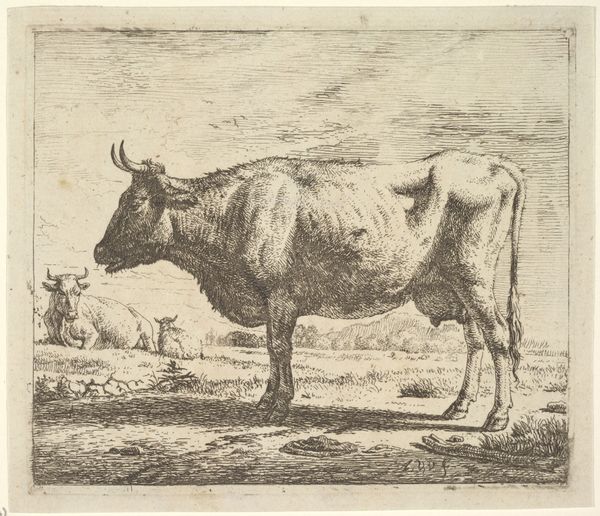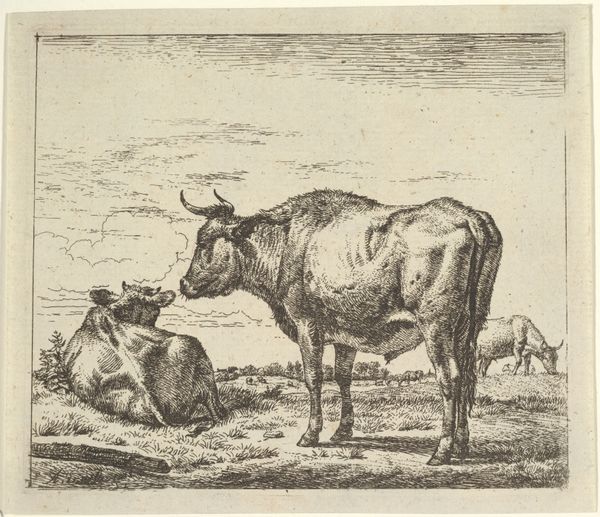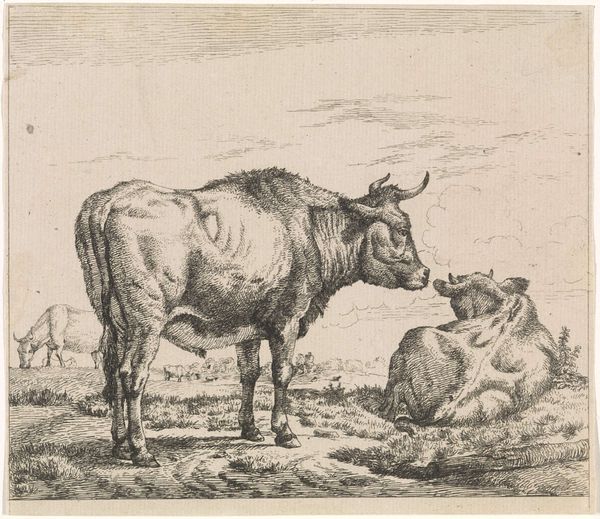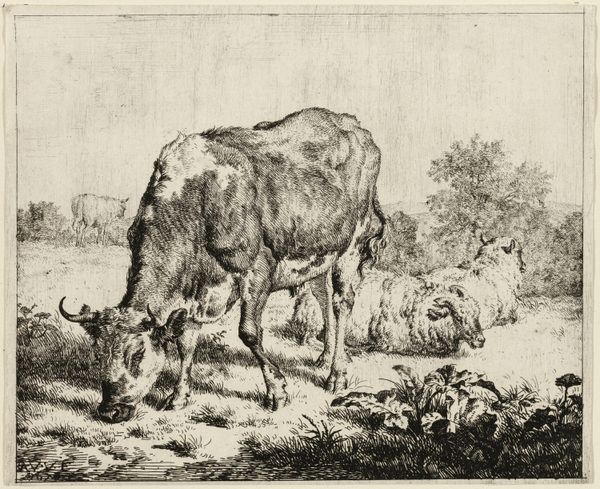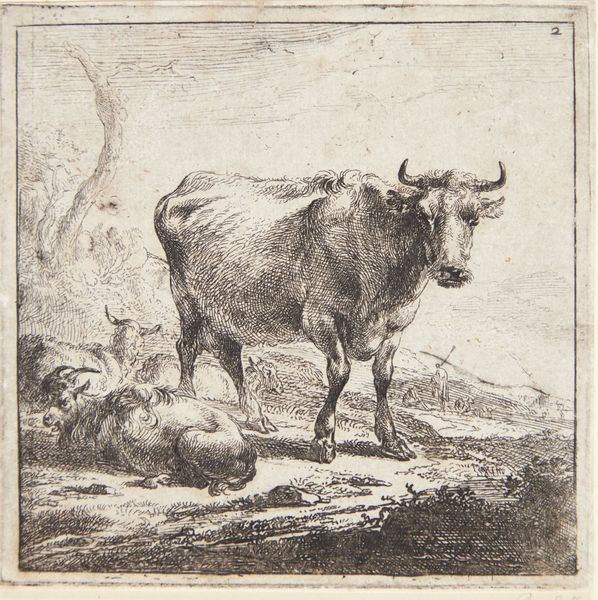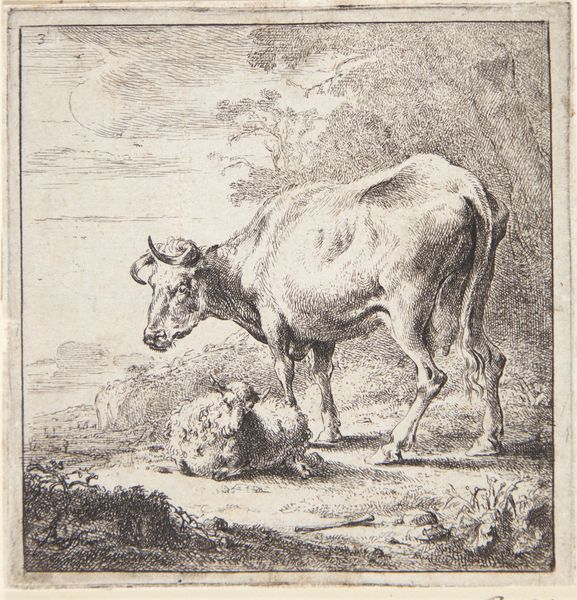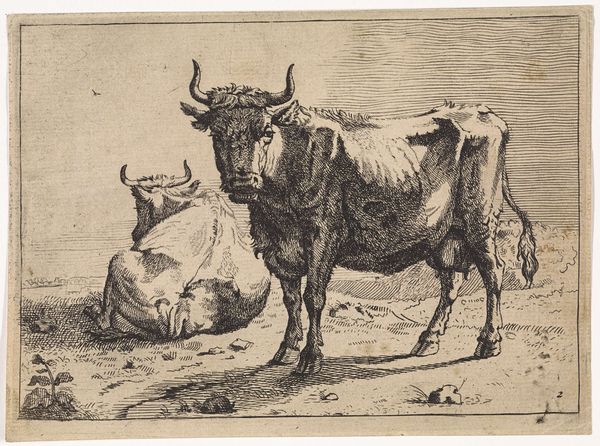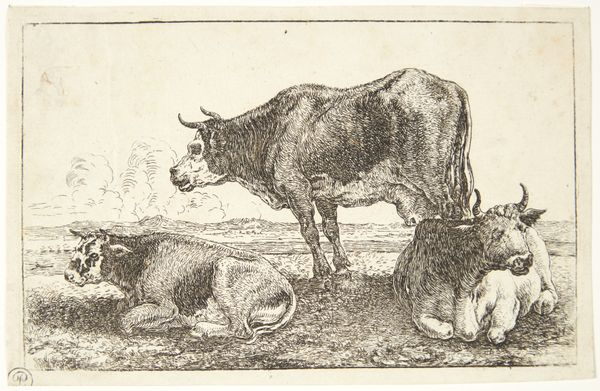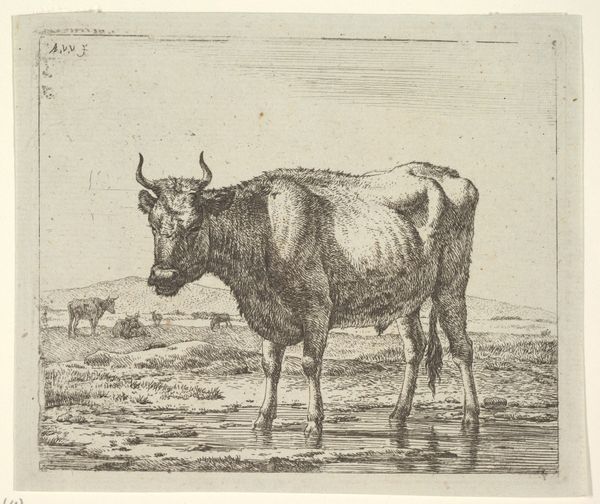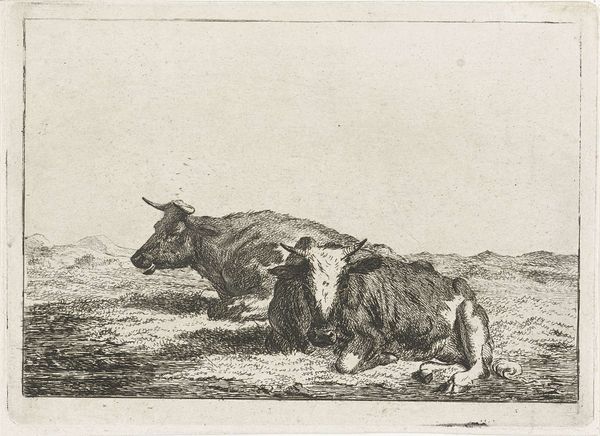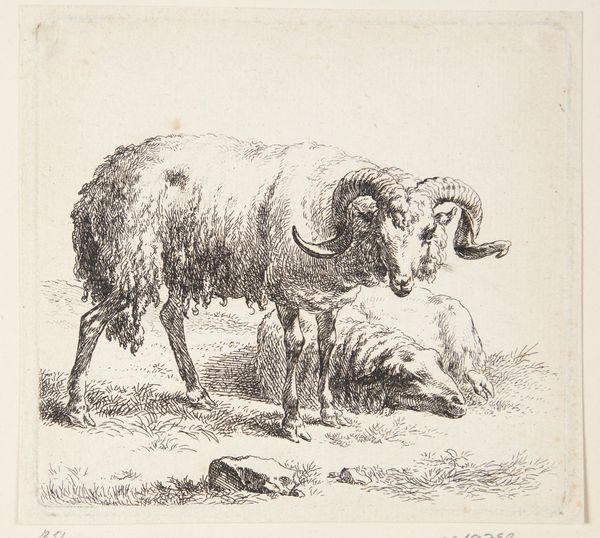
print, etching
#
dutch-golden-age
# print
#
etching
#
landscape
#
genre-painting
Dimensions: 90 mm (height) x 91 mm (width) (bladmaal)
Curator: Before us is "Standing Cow and Two Lying Sheep," an etching made by Nicolaes Berchem in 1644. Editor: My first thought is how the stark, almost scientific quality of the linework makes me feel like I'm viewing specimens under observation rather than livestock in a pasture. Curator: Indeed. Let's consider the socio-economic landscape in which Berchem was working. The Dutch Golden Age was a period of tremendous economic growth fueled, in part, by agricultural production and trade. The intense interest in accurately rendering such subjects reflects the material value society placed upon livestock, doesn't it? We must note how such value also informed social dynamics back then. Editor: Absolutely. Beyond mere economic indicators, the positioning of the cow—standing tall and robust, facing the viewer, as compared to the lounging sheep behind—speaks volumes. It creates a hierarchy, drawing a stark visual and perhaps also social line, given that land ownership in the 17th century was primarily a privilege afforded to men. The passivity projected from the sheep enhances this contrast, quietly reinforcing prevailing power structures. Curator: I'm intrigued by the level of detail he achieves using only etched lines. Look at the subtle shading he manages on the cow’s hide, which surely attests to both the high caliber of materials and mastery over tools and equipment employed in the print-making process during that period. The sheer volume of livestock prints flooding the market during the 17th century further suggests that there were major networks involved, creating demand for specialization and technical refinements that Berchem surely benefited from. Editor: And this, for me, highlights how seemingly benign genre scenes become fascinating sites of meaning-making, revealing complex socio-economic and gendered power dynamics. Even a bucolic landscape, rendered with meticulous detail, echoes broader discourses shaping early modern European society. It is difficult to simply cast aside these works as being merely descriptive! Curator: So, whether it be the labor and materials involved or the socio-economic commentary subtly embedded in the subject, analyzing these types of works provide valuable insight. Editor: Definitely food for thought. They reveal far more beneath the surface when approached critically, showing that these aren’t just any idyllic farm animals at all.
Comments
No comments
Be the first to comment and join the conversation on the ultimate creative platform.
